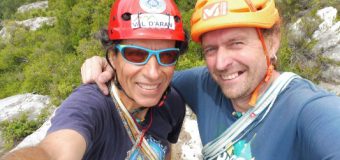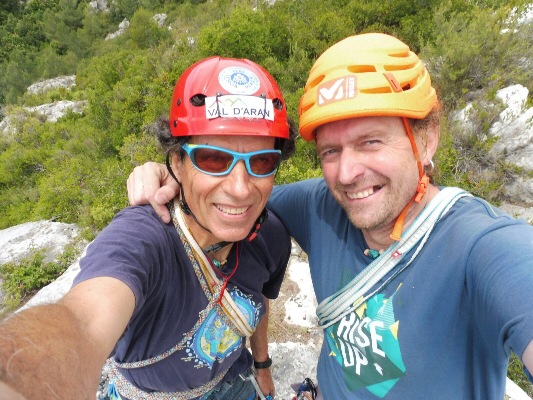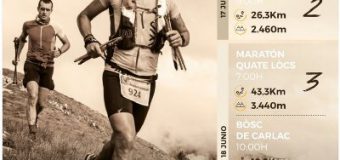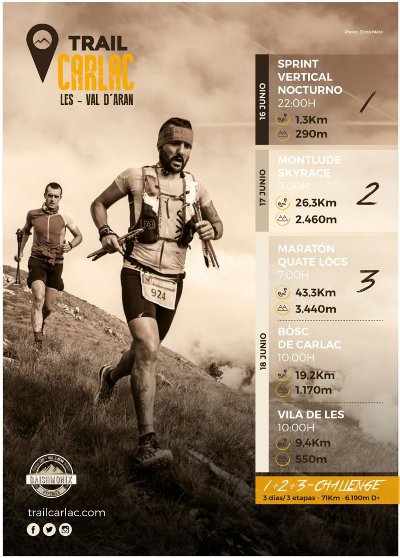![]()
The Escuela de equitación de la Val d’Aran offers all kinds of activities for horse lovers.
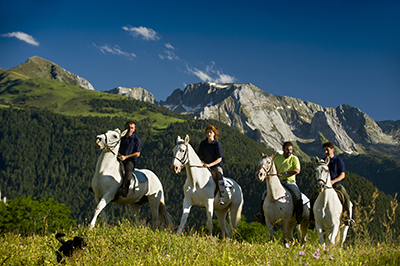
Located in Vielha, in addition to being a learning center, it is a dynamic area of this sport in the valley, offering various possibilities adapted to all levels.
• Horseback riding trips for 1, 2 or 3 hours. For expert horsemen or for beginners without level.
• One and two day trips and routes
• Pony walks on the Pla de Beret and Vielha
• Summer courses
• Pupilage of horses
In summer, touring the valley on horseback can become one of the most enjoyable experiences: from horseback riding when nature is displayed in all its splendor, to the quiet walks that allow you to know the Aranese villages.









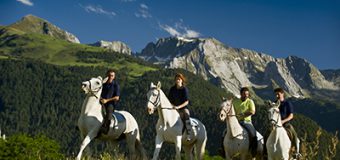
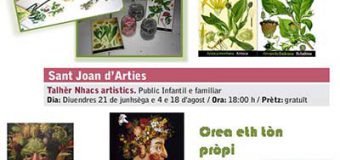
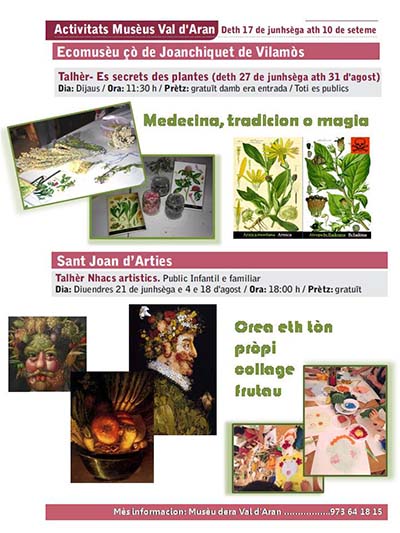
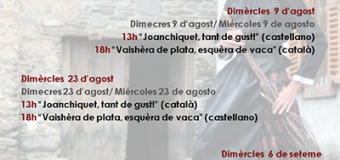
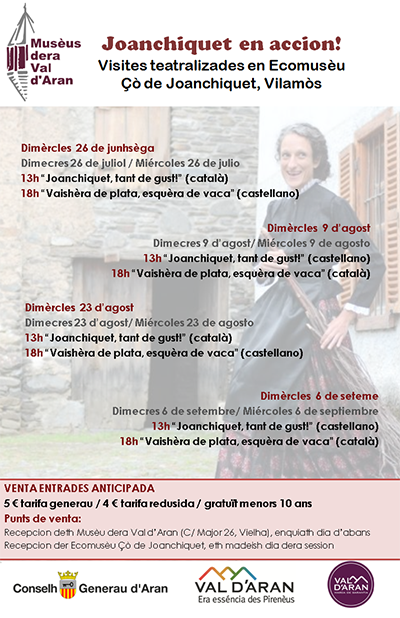 The Joanchiquet de Vilamòs ecomuseum has launched this year a program of theatrical visits that will take place on 26 July, 9 and 23 August and 6 September with two daily sessions.
The Joanchiquet de Vilamòs ecomuseum has launched this year a program of theatrical visits that will take place on 26 July, 9 and 23 August and 6 September with two daily sessions.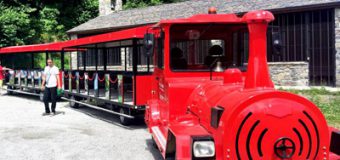
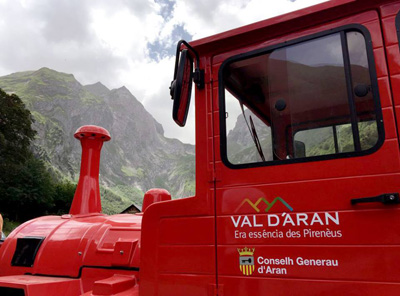 For the second consecutive year, the Consèlh Generau d’Aran has started the train of Artiga de Lin, which will begin its service on Saturday 22 July and end on 10 September.
For the second consecutive year, the Consèlh Generau d’Aran has started the train of Artiga de Lin, which will begin its service on Saturday 22 July and end on 10 September.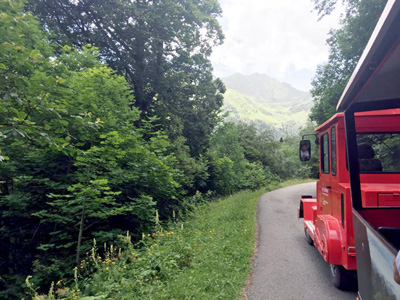
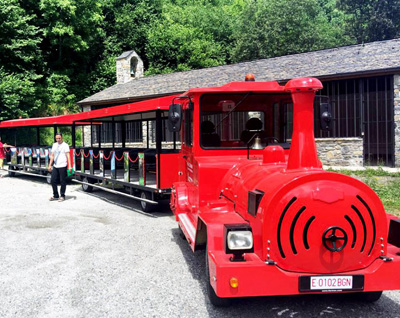
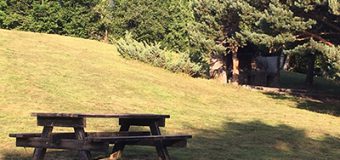
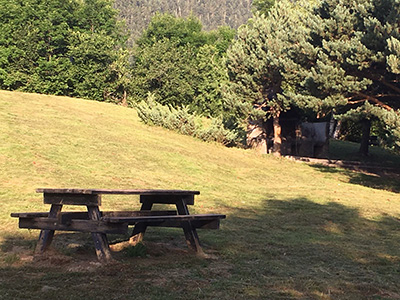 The Consèlh Generau has set up a brigade for sanitation of the nearly one hundred kilometers of trails that form part of the historic network of hiking and mountain biking trails in the Val d’Aran.
The Consèlh Generau has set up a brigade for sanitation of the nearly one hundred kilometers of trails that form part of the historic network of hiking and mountain biking trails in the Val d’Aran.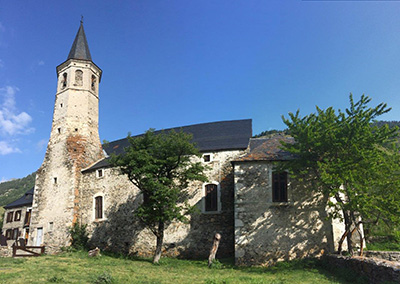 FFinally, it is worth mentioning the rehabilitation and improvement actions in the church of Nuestra Señora de Montgarri carried out by the Consèlh Generau. The works will improve the pavement to eliminate architectural barriers and will facilitate access to the church choir, leaving the Romanesque portico free of entrance to the church before the north facade. Also, various elements will be relocated to provide a better view of it to visitors.
FFinally, it is worth mentioning the rehabilitation and improvement actions in the church of Nuestra Señora de Montgarri carried out by the Consèlh Generau. The works will improve the pavement to eliminate architectural barriers and will facilitate access to the church choir, leaving the Romanesque portico free of entrance to the church before the north facade. Also, various elements will be relocated to provide a better view of it to visitors.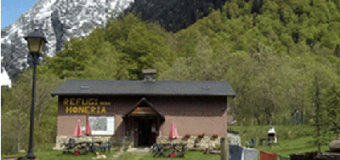
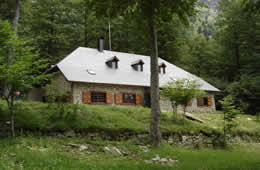 Owned by the Consèlh d’Aran, the refuge is located at the foot of the river Noguera Ribagorzana on its left bank. From the refuge two interesting itineraries leave, one of which towards the waterfall and the ‘estanys’ of Besiberri. The other path climbs above the Hospital de Vielha, dividing towards the valley of Molières, in the southwest direction, and towards the Port of Rius, in the north direction.
Owned by the Consèlh d’Aran, the refuge is located at the foot of the river Noguera Ribagorzana on its left bank. From the refuge two interesting itineraries leave, one of which towards the waterfall and the ‘estanys’ of Besiberri. The other path climbs above the Hospital de Vielha, dividing towards the valley of Molières, in the southwest direction, and towards the Port of Rius, in the north direction. Location: Valle del Torán, Canejan
Location: Valle del Torán, Canejan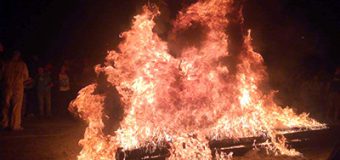
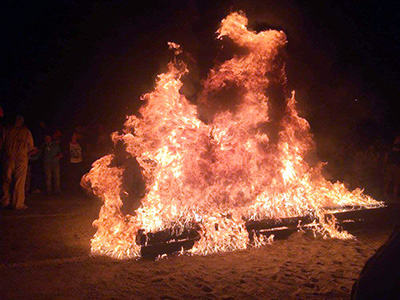
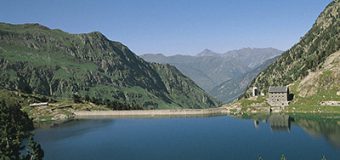
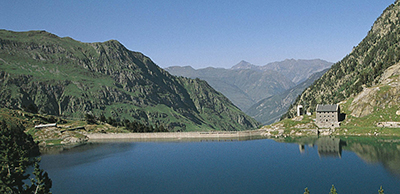
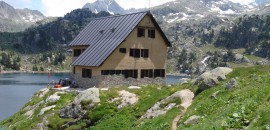 Owned by the Consèlh d’Aran, the refuge is located within the peripheral area of the Parc National d’Aigüestortes i Estany de Sant Maurici, near the town of Salardú. Both in summer and in winter from there can be practiced various activities: ascents, itineraries on foot, climbing, skiing, snow channels or snowshoes. In addition, Colomers is part of the great route Carros de Foc.
Owned by the Consèlh d’Aran, the refuge is located within the peripheral area of the Parc National d’Aigüestortes i Estany de Sant Maurici, near the town of Salardú. Both in summer and in winter from there can be practiced various activities: ascents, itineraries on foot, climbing, skiing, snow channels or snowshoes. In addition, Colomers is part of the great route Carros de Foc.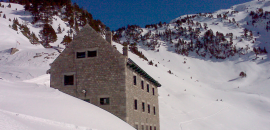 Owned by the Consèlh Generau d’Aran, it is part of the municipality of Naut Aran and its nearest town is Arties. The shelter is run by the guard Josep Mohedano and his team, who provide service and information necessary to enjoy the mountain during the winter and summer seasons. From Restanca you can practice climbing, mountain skiing and various walking itineraries of different length.
Owned by the Consèlh Generau d’Aran, it is part of the municipality of Naut Aran and its nearest town is Arties. The shelter is run by the guard Josep Mohedano and his team, who provide service and information necessary to enjoy the mountain during the winter and summer seasons. From Restanca you can practice climbing, mountain skiing and various walking itineraries of different length.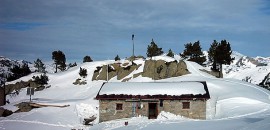 Owned by the Conselh Generau d’Aran, the Saboredo refuge is located within the peripheral protection zone of the Parc National d’Aigüestortes i Estany de Sant Maurici. An authentic mountain refuge built in stone and surrounded by trees, in a spectacular setting overlooking the Saboredo circus on one side and the Baqueira Beret massif and the Mauberme on the other.
Owned by the Conselh Generau d’Aran, the Saboredo refuge is located within the peripheral protection zone of the Parc National d’Aigüestortes i Estany de Sant Maurici. An authentic mountain refuge built in stone and surrounded by trees, in a spectacular setting overlooking the Saboredo circus on one side and the Baqueira Beret massif and the Mauberme on the other.